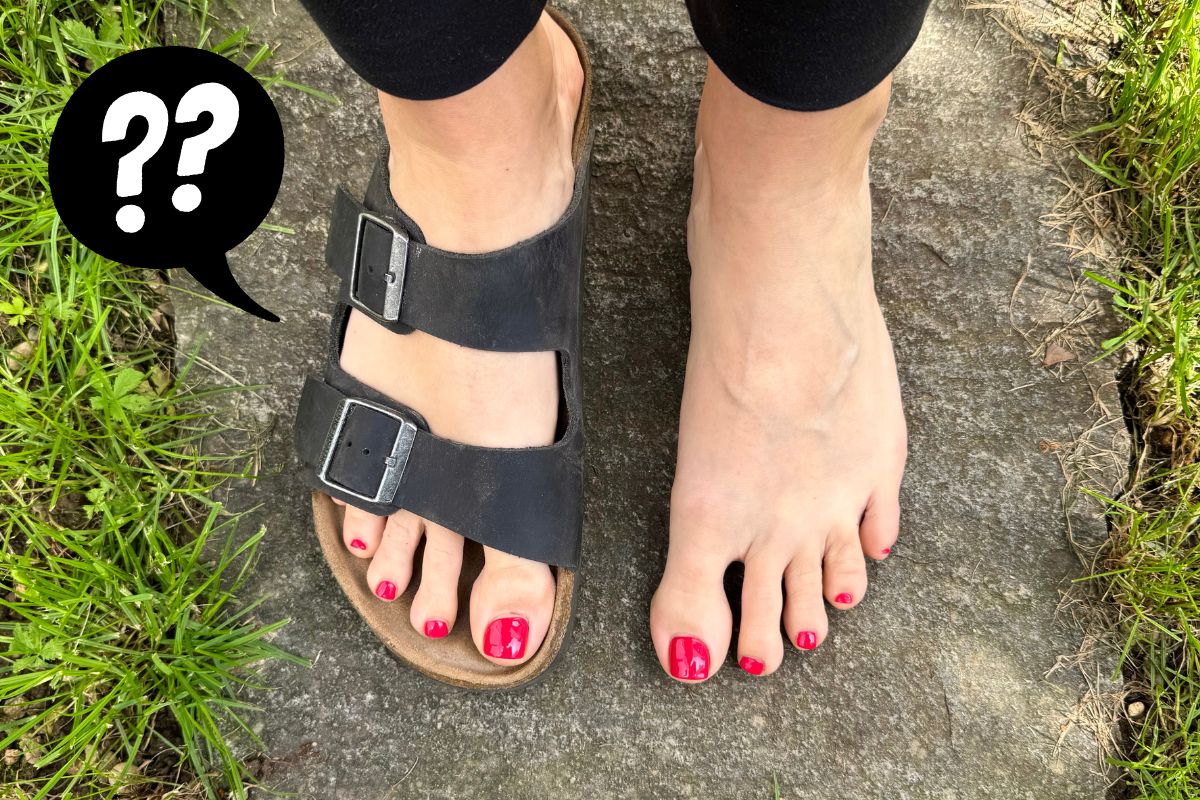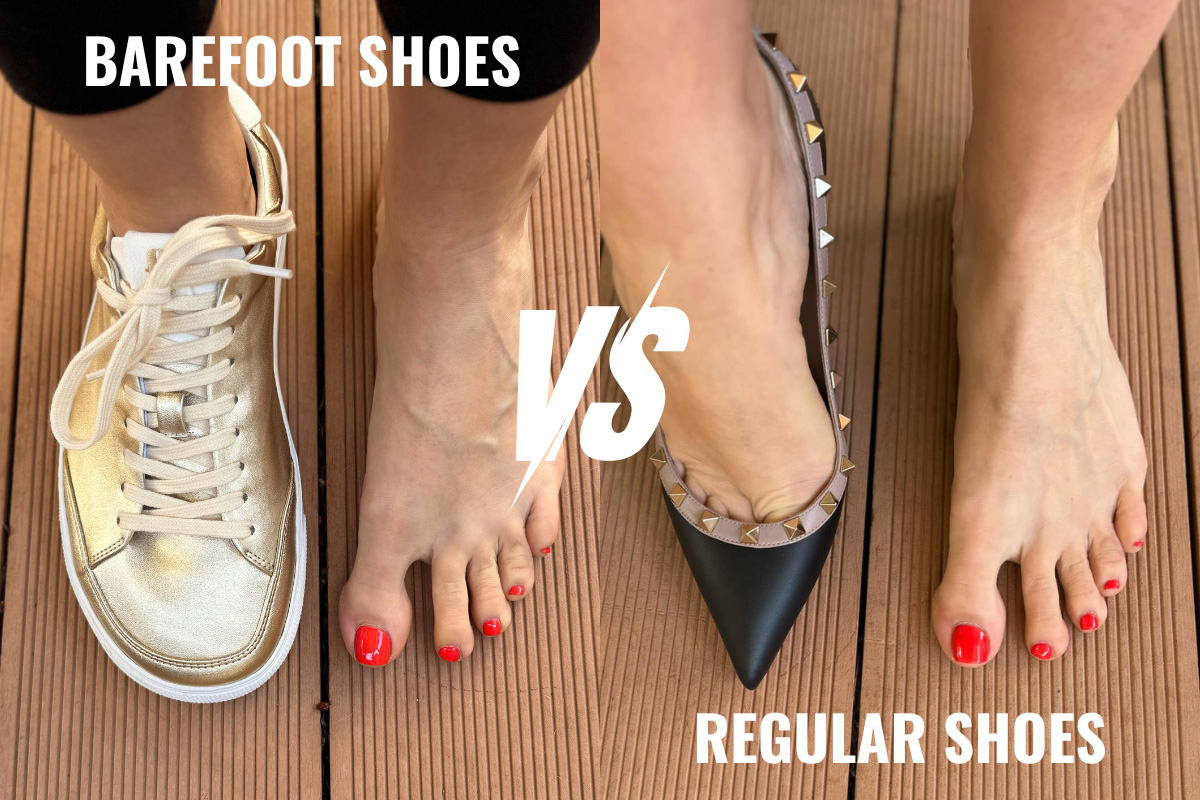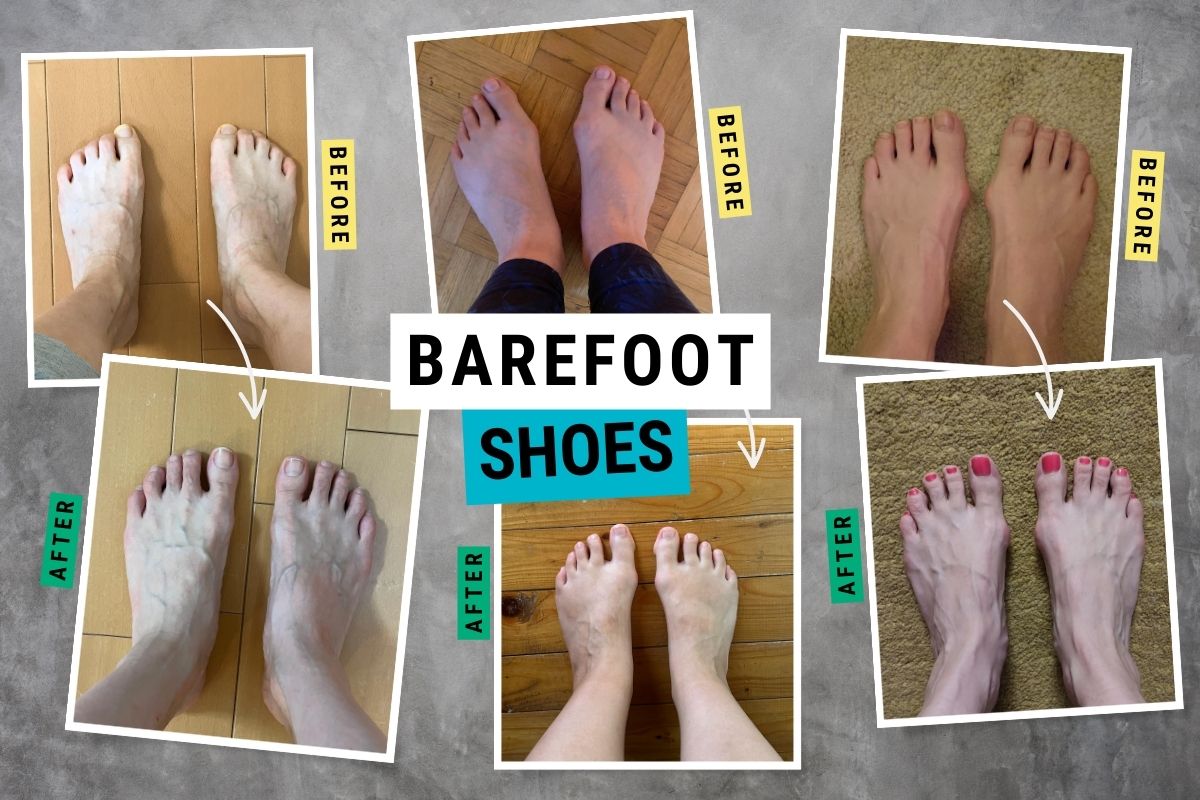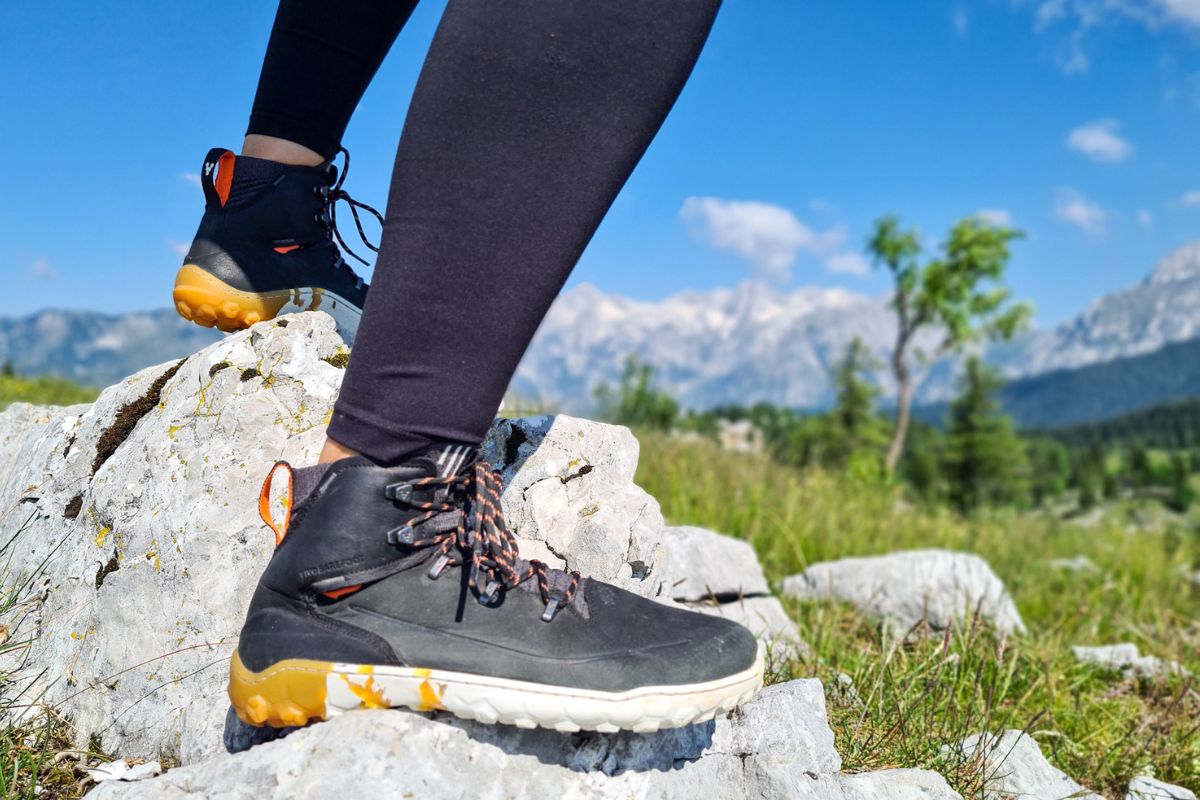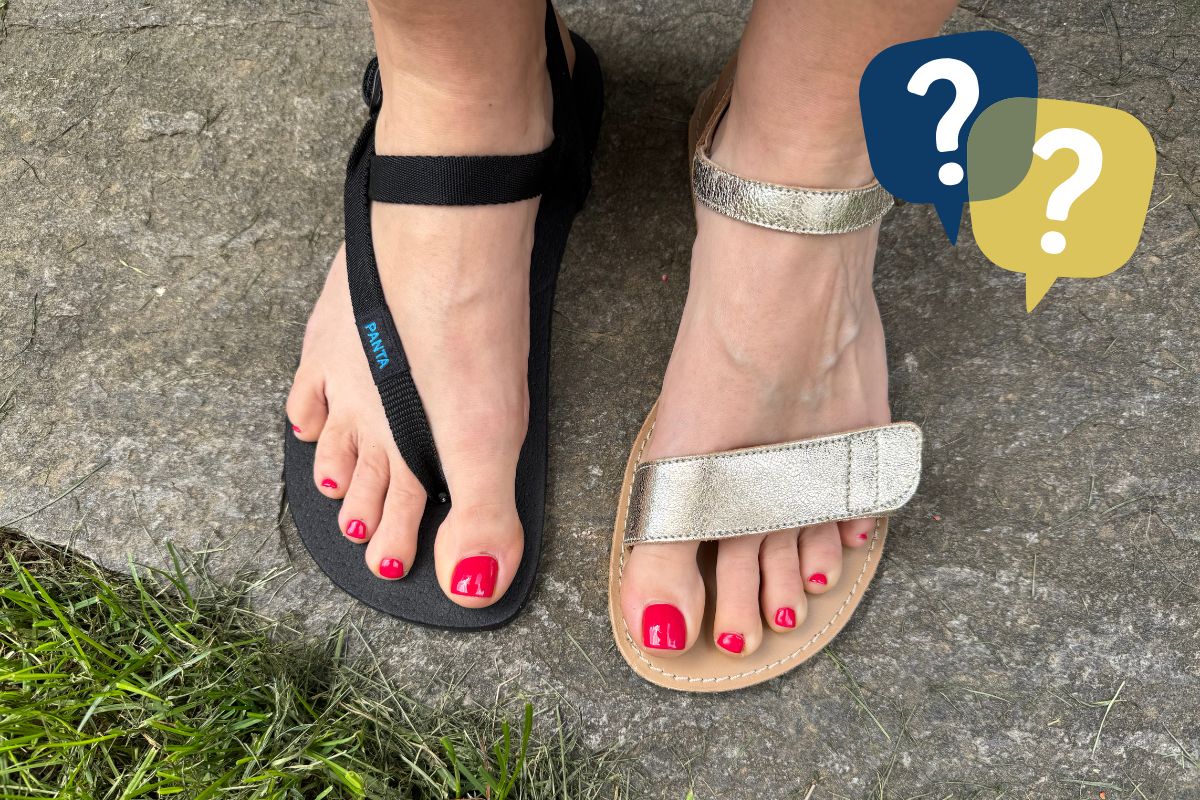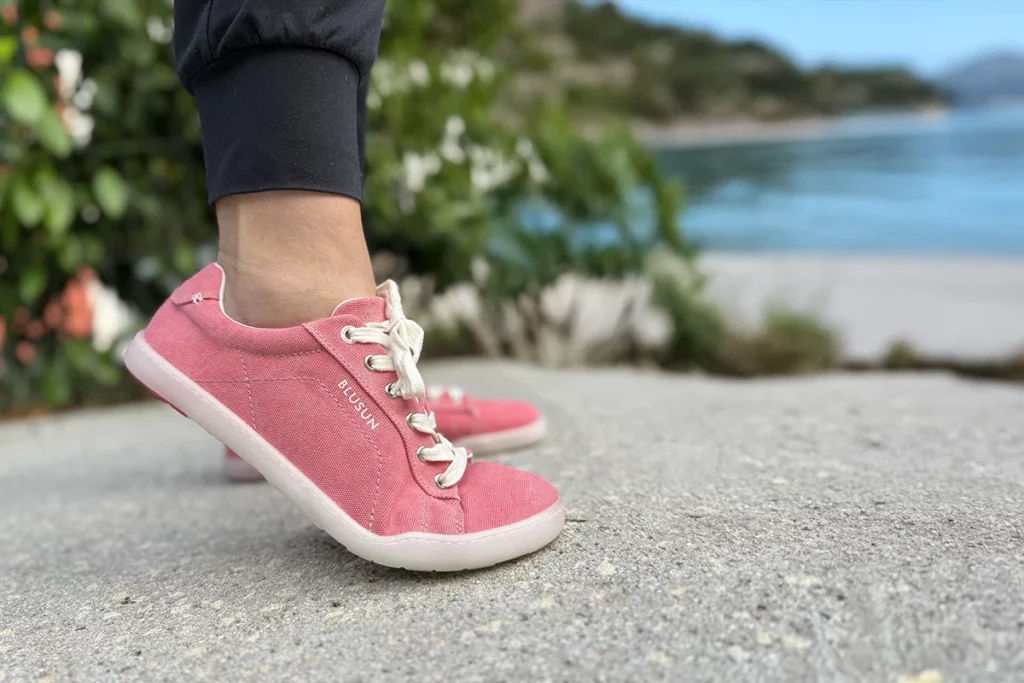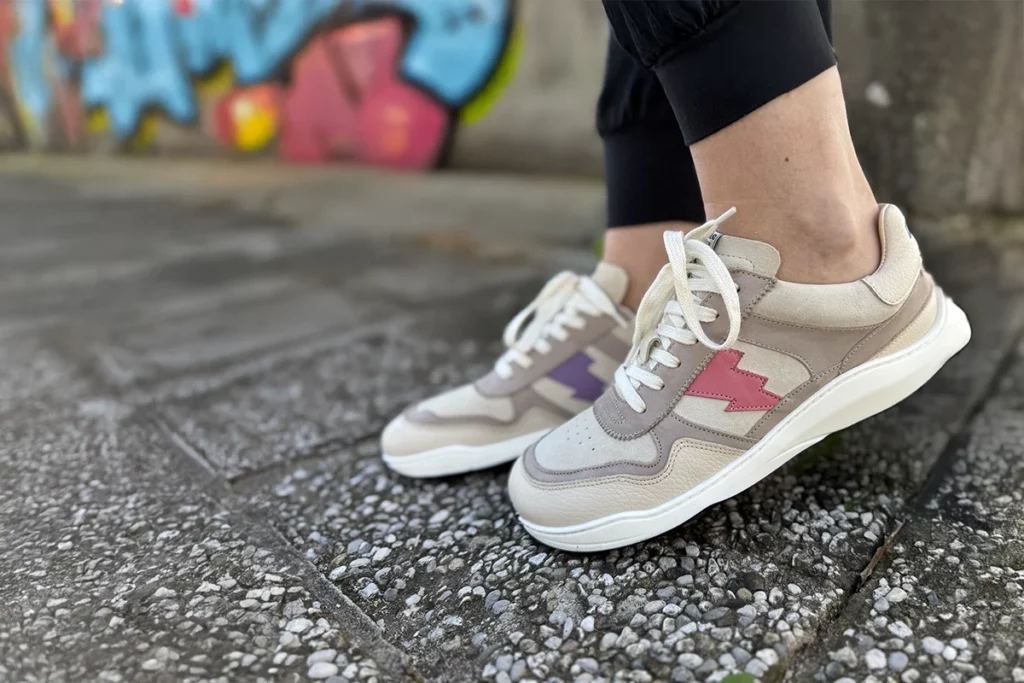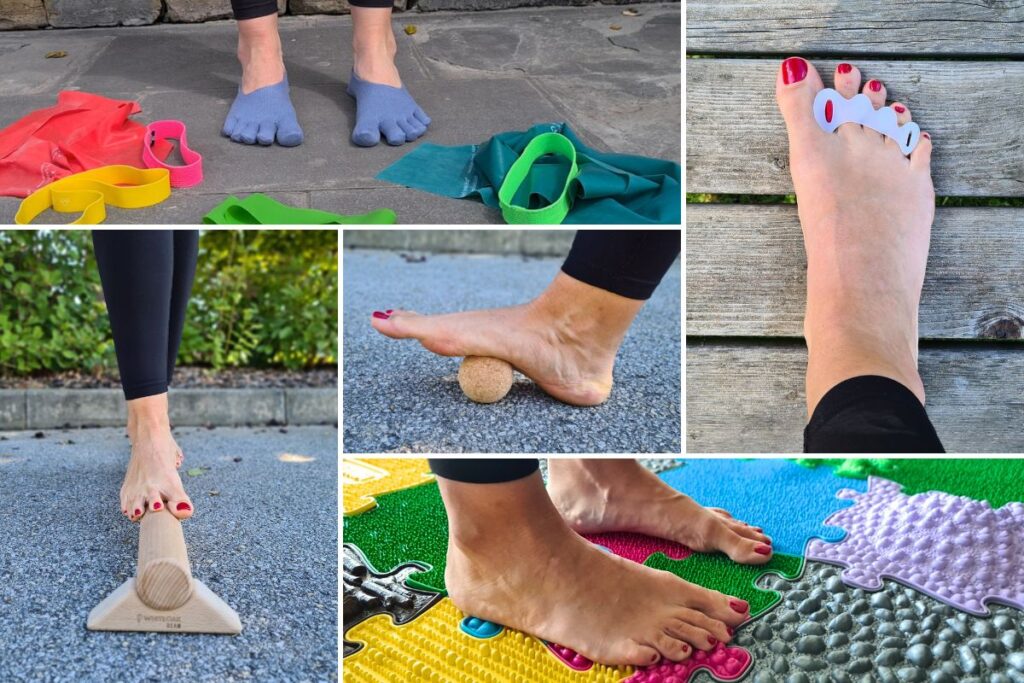
Whether you step into the barefoot world for health, sports, or environmental reasons, it is important to remember that transition to barefoot shoes is not a sprint but a marathon. It takes some time to get used to ‘forgotten’ ways of walking and minimizing the risks involved.
Even though you will quickly realise that you don’t want to wear your old shoes anymore, give your feet time to slowly improve their strength and mobility, so that your toes slowly expand and become more mobile. Also spend as much time as possible barefoot.
Always adjust your transition time and footwear to your current body and foot condition to ensure a safe transition. After all, we all want a healthy and functional body that allows us to do all the things we love to do.
In the following post you will find some tips on how to make the right transition to barefoot shoes, as well as brands with thicker soles but with the right toe box shape, which can be a great choice for transitional footwear.
1. Your body needs time to make the transition

The feet contain many muscles and joints that we have spent years squeezing into shoes that are too tight and stiff. These shoes have acted like armour or plaster on our feet, preventing them from developing and moving properly. Our feet became weak and deformed.
The time it will take you to make the full transition to barefoot shoes will therefore always depend on each individual, but mainly on the current condition of your feet, the footwear you’ve worn so far and the amount of time you’ve spent barefoot.
Although some people can easily start wearing even the thinnest barefoot shoes without a long transition, it doesn’t have to be the same for you. Our foot deformities vary, and our physical condition, age, the amount of walking in barefoot shoes we do each day, the activities we do and the terrain we walk on, as well as any history of barefoot walking, all play an important role.
Always start slowly when changing to barefoot shoes. Gradually increase the time you spend in barefoot shoes each day. Observe your body and give it time to get used to the change.
For example, start with 30 min/day and then gradually increase the time you spend in barefoot shoes each day. Usually people need about 2-3 months to make the full transition, but this can vary from person to person.
In this way, you will slowly and in a controlled way improve the mobility and strength of your feet, which will respond to the change with increased toe spacing and improved mobility.
The foot will start to change shape and become wider. Don’t worry, there’s nothing wrong with that. Your foot is just returning to its natural shape.
Your body will quickly start to demand even more toe space and an even thinner sole. Many nerves in your feet are longing to feel different textures that you have not been able to feel before.
If you feel pain (sore heels, Achilles tendon, also hips, knees, etc.), reduce the time you wear barefoot shoes. Do not rush. Injury is the last thing you want.
Take up more demanding activities (hiking, running) only when your foot muscles are strong enough to take on bigger challenges.
Of course, it is also crucial how much time you are willing to spend doing body exercises that will help restore mobility to your feet and, ultimately, exercises that will help restore strength, flexibility and balance to your whole body (yes, everything in the body is connected and the feet are not isolated from the rest of the body).
2. Examine your gait
Our natural gait is often altered by modern, cushioned shoes. Because of the great thickness of the sole, the foot does not feel the ground underfoot, so it has no sense of how hard it can touch the surface. At the same time, the loss of mobility in the foot and the inability to push off with the big toe causes the body to make a number of compensations that ‘enable’ the body to walk despite the non-functioning foot. Unfortunately, such compensations can lead to pain and wear and tear on the parts of the body that perform this task instead of the feet and the ankle joint.
Unfortunately, the incorrect gait pattern we have acquired from wearing the wrong shoes remains in our gait even when we are barefoot, which can lead to injuries. We need to relearn the correct way to walk. We start slowly by thinking about how we walk, our stride should be soft and gentle.
The heel is the first to touch the floor, but this contact with the heel pad should be gentle and the full load on the foot should only be applied when the whole foot is on the floor. When we become aware of the sensation in our feet, we no longer hit the ground so hard.
It is important to keep the whole body aligned (ankles aligned with the knee, hip and shoulder).
For more information on proper body alignment, I also recommend reading Katy Bowman’s Whole Body Barefoot.

During the push-off phase, engage your glutes and push back with the standing leg. The foot acts as a kind of spring while walking. As the foot is loaded, it undergoes pronation (the foot flattens, stretches and expands) and then supination (the arch rises, the foot contracts), which propels us forward. It is important that the big toe is actively enganged during the push-off, as this is the only way the plantar fascia can stretch and the foot become a rigid level, which propels us forward.
For those of you who are interested in more detail about our walk, I recommend the book Born to Walk. You may also find this video helpful in understanding the correct way to walk.

The sole of barefoot shoes can quickly become a good indicator of your walking pattern.
The green line in the figure shows the corresponding force pattern during walking, where the force during the walking cycle runs from the middle of the heel through the 5th metatarsal head to the 1st metatarsal head and then to the big toe.
The red line shows the inappropriate path of forces with the midfoot abrasion resulting from wearing the wrong footwear. There may also be wear on the sole, socks and hard skin on the foot in the area between the 2nd and 3rd metatarsal heads (grey circle), which is caused by the concave shape of the metatarsal joints (caused by incorrectly shaped shoes that are too tight and can only be corrected with exercises).
To engage the big toe properly, the foot must be pointing straight when walking. Do not force the straight position, especially if you feel discomfort or if your knees and hips turn inwards. Turning the foot outwards can be a result of compensating when walking and a sign of poorer mobility of the ankles, hips, toes, etc. and requires work on mobility and strength of the whole body.

In the case of some non-functional feet, you may notice an annoying rubbing of the pinky toe against the edge of the shoe when walking in barefoot shoes. The problem may occur in feet with excessive pronation, where the big toe is not properly activated during the push-off phase.
The pronation of the foot, or turning inwards, therefore simply continues, even when the toes should already be pushing the foot away. The foot is then over-rotated with each step, which is observed as rotation of the foot in a shoe or sandal. In such cases, only working on correct gait and foot and body functionality can help.
3. A functional body is essential to living a functional life
The modern lifestyles and conveniences we bring into our lives inevitably have many negative effects on our bodies. The use of chairs and the time we spend sitting, or in a forced posture at the computer and in front of the phone, has a profound effect on the mobility of our hips, posture, strength and alignment of the whole body.
I’m a very big advocate of barefoot footwear and its impact on our feet and body, but I want you to be aware that every part of our body needs to be taken care of in order for the body to function and function properly (mobility, balance, strength and also proper posture of the whole body).
It’s great to start with your feet. Our feet are the only surface in the body that is in contact with the ground on a daily basis, and any imbalance in this area affects the imbalance of the whole body.
Your goal should not only be to replace your footwear, but to regain the functionality of your whole body and feet – mobility of the toes, ankles, balance, correct posture, healthy weight, etc.
From my own experience, these physical changes take time and a change in lifestyle (we can talk in years here, not months and days).
It was my problem with diastasis recti after childbirth that led me into the world of barefoot shoes. Although the MuTu programme helped me tremendously and I quickly achieved very good results in foot mobility and strength with the barefoot shoes, my left foot indicated that something was still not right in my body alignment.

I started to explore further. Carrying children and a heavy bag exclusively on my left shoulder, pregnancy, working at the computer, sedentary lifestyle, etc. took their toll. I had a lot of work to do that barefoot shoes alone could not solve.
I am only sharing the current result with you. My work is not done yet. Otherwise, proper care of our physical body is necessary for the rest of our physical life 🙂
Of course, your situation may be completely different from mine, but why am I telling you this?
Because I want you to realise that everything in the body is inevitably connected, and that every dysfunctional link in the kinetic chain affects other parts of the body.
If you just take away the cushion from your feet and wear possibly too narrow barefoot shoes, that’s not adequate. The foot must become functional. This means that the toes return to the correct position (which can only be achieved with a wide enough shoe) and the foot must also be able to achieve adequate pronation and supination when walking. This is the only way it can absorb shocks as it flattens, widen and get longer and then gets shorter, acting like a rigid lever in the push up phase.
Barefoot shoes are therefore not a magic wand that will save you from all your problems, but they are an excellent starting point for the proper development of your feet and body.
All the imbalances and problems we’ve built up over the years won’t just disappear overnight, which is why barefoot shoes always come with a whole package of self-care and body care. It’s not always the easiest way to go, of course, but your body will be extremely grateful for the changes.
It is not always easy to go through the process of body and foot transformation alone and I needed help too. There are several programmes online that can help you with your specific foot or body problems, help you achieve better mobility and bring more natural movement into your life.
Below are the programmes I have personally attended, but there are many more. You can find other experts – some of whom also offer online consultations and can help you with specific foot or lower body problems – here.
 Gary Ward AiM – Gary’s Wake Yout Feet Up! and Wake Your Body Up! have been one of the best investments for me, bringing me a new perspective on body movement. Through identifying the pressures in your feet, Gary guides you through a variety of corrective movements that lead to remarkable changes.
Gary Ward AiM – Gary’s Wake Yout Feet Up! and Wake Your Body Up! have been one of the best investments for me, bringing me a new perspective on body movement. Through identifying the pressures in your feet, Gary guides you through a variety of corrective movements that lead to remarkable changes.  David Grey Rehab – David offers several programs focusing on different parts of the body – lower body, upper body, core, and feet. I’ve purchased them all and find each one essential for anyone looking to improve whole-body strength and mobility. The exercises are well-explained, easy to follow, and the programs are available at a very affordable price. This is probably the only program you’ll ever need for the rest of your life.
David Grey Rehab – David offers several programs focusing on different parts of the body – lower body, upper body, core, and feet. I’ve purchased them all and find each one essential for anyone looking to improve whole-body strength and mobility. The exercises are well-explained, easy to follow, and the programs are available at a very affordable price. This is probably the only program you’ll ever need for the rest of your life. Rachel Tyler – Rachel has undergone a number of training courses and is also a qualified AiM therapist. She helped me to analyse my body movement and helped me tremendously with corrective exercises to improve my problems when I was stuck at a certain point and could not go any further. She gave me a whole new perspective on my problems with my curved spine and loose hip, which they even wanted to operate on in my teens because it was ‘too loose’.
Rachel Tyler – Rachel has undergone a number of training courses and is also a qualified AiM therapist. She helped me to analyse my body movement and helped me tremendously with corrective exercises to improve my problems when I was stuck at a certain point and could not go any further. She gave me a whole new perspective on my problems with my curved spine and loose hip, which they even wanted to operate on in my teens because it was ‘too loose’. VIIT V Formi z Alenko Košir – a programme that is an investment for your life, because maintaining mobility and working on strength and balance is crucial for our bodies. I have been on many different on-line exercise programmes, but none of them can compete with Alenka’s. Here you get it all in one package – working on mobility, balance and full body strength, not forgetting our feet of course (the program is in Slovene).
VIIT V Formi z Alenko Košir – a programme that is an investment for your life, because maintaining mobility and working on strength and balance is crucial for our bodies. I have been on many different on-line exercise programmes, but none of them can compete with Alenka’s. Here you get it all in one package – working on mobility, balance and full body strength, not forgetting our feet of course (the program is in Slovene).
When changing footwear, I definitely recommend wearing toe spacers (e.g. Correct Toes) to help you get the correct position of your toes and to activate your big toe properly when walking. The greater surface area with the ground will also improve your balance and, as the toes are not squished, the blood flow in the feet is also better.
4. It’s time for barefoot shoes, so choose your first pair

Choosing the first pair of barefoot shoes is usually the hardest part for any beginner. We’ve already answered many of your questions in my post How to choose your first pair of barefoot shoes?, but in this post we’ll focus on models which can be used for transition to barefoot shoes.
The appropriate toebox shape should always be the one you do not want to compromise on. The shoe you choose, whether it has a thicker or a thinner sole, must have an anatomically shaped toebox and must also be wide enough for your feet (even when your feet have reached their natural width, not just at the beginning when your toes are still squished). This is the only way to allow your toes to spread properly.
Adjustments can be made to the thickness of the sole, as a thin, zero drop sole, combined with too fast a transition and non-functional feet, can be one of the most common causes of transition pain.
Here you can choose different routes:
- you immediately start wearing the thinnest soles
- choose a model with a thicker sole for the transition
- combine models with thicker and thinner soles
If you are new to barefoot shoes, have weak feet or have never walked barefoot before, the best way to start is by wearing a pair of minimalist shoes with a thicker sole. Thick soles provide more protection from impact and also give more cushioning for an easy start.
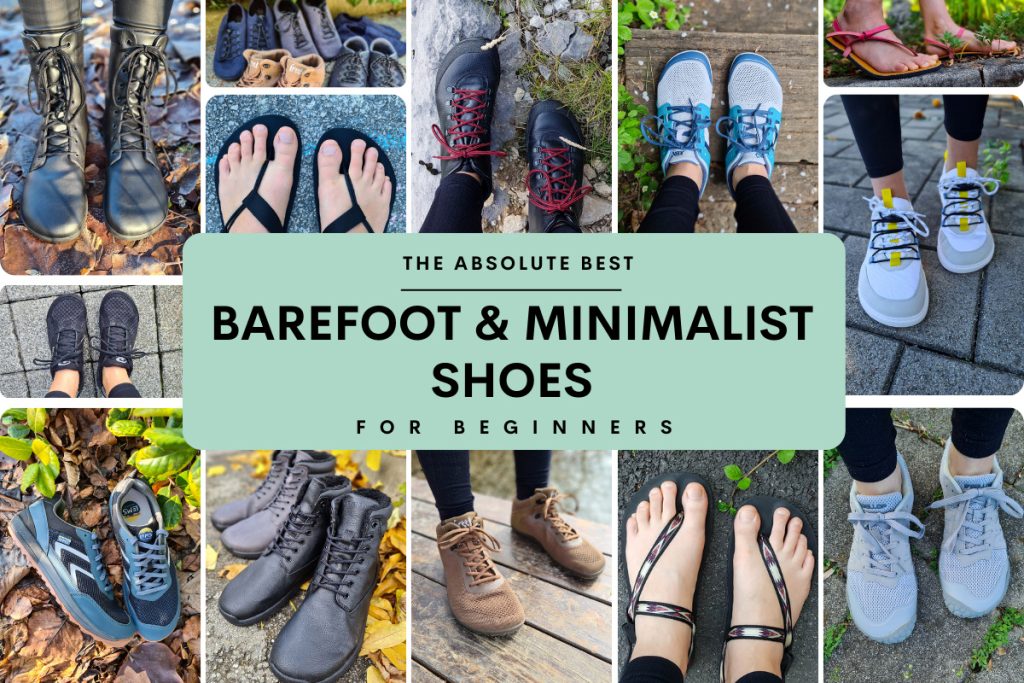
Find the full list of the best barefoot and minimalist shoes for beginners here.
If you have walked a lot barefoot before, then thin-soled, minimal models will probably be more comfortable for you. These shoes allow you to feel the ground more easily.
If you would like to start with the thinnest sole, don’t forget to observe your body and carefully increase the time you spend in barefoot shoes. You can also add an insole to the shoe at the beginning if you feel you need more cushioning (but note that this extra insole also takes up some extra space in the shoe – less available width and volume).
Conclusion
We hope you can use this post to make the transition to barefoot shoes safely, and bring greater comfort and health to your body. But remember that with any major lifestyle change, it’s important to take things slowly to prevent injury or unnecessary pain. Take as much time as you need, but don’t give up!

